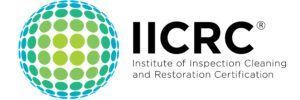Health Information
Did you know that we breathe in nearly 3000 gallons of air daily? With the average person spending 90% of their time indoors, indoor air quality is vital to our health. Could your home be making you sick?
Signs That You May be Exposed to Toxic Mold
- Coughing
- Sneezing
- Sore, itchy throat
- Congestion
- Runny nose
- Sinus headaches
- Wheezing
- Breathing abnormalities
- Itchy, dry, or unusually watery eyes
- Irritated or itchy skin
- Unexplained rashes
- Fatigue
- Mood instability
- Digestive issues, IBS, or SIBO
- Shortness of breath
- Slow wound healing
- Weakened immune system
- Muscle twitching
- Feeling inexplicably better when not at home
- Hair loss
- Nail ridges
- Urinary issues
- Nutritional deficiencies
- Cracked lips
- Bloodshot eyes
- Anxiety
- Post-exertion malaise
- Short-term memory issues
- Poor word recollection
- Vision changes
- Tinnitus
- Tremors
Chronic Fatigue Syndrome (ME/CFS)
Chronic Fatigue Syndrome, or Myalgic Encephalomyelitis (CFS/ME), is characterized by profound and debilitating fatigue, sleep abnormalities, pain, and other symptoms exacerbated by physical exertion. There is currently no cure for CFS/ME. However, research in this field is advancing, and some treatments may provide symptom relief. New research suggests a link between exposure to specific mycotoxins released from toxic molds found in water-damaged buildings and chronic fatigue syndrome.
Mold Allergies
In people with mold allergies, contact with mold in their environment causes the immune system to go into overdrive. They may experience symptoms such as sneezing, watery or itchy eyes, dry and flaking skin, stuffy nose, cough, rashes, and more. Mold allergies are also linked to respiratory conditions such as asthma.
Respiratory Issues
Mold exposure has been linked to respiratory issues such as wheezing, coughing, shortness of breath, and asthma. Those who already have asthma may have a more difficult time breathing in moldy environments. Prolonged exposure to certain toxic molds has also been linked to pulmonary diseases such as Aspergillosis and COPD.
Mold Illness Statistics
It is estimated that 50% of all homes and buildings in the United States have enough water damage to cause illness in humans.
At least 24% of the population has a genetic defect (HLA-DR), making them susceptible to a mold illness called Chronic Inflammatory Response Syndrome (CIRS.)
The other 76% may also experience a variety of reactions and symptoms related to exposure to toxic indoor mold.
You don't need to be good at math to see that water damage and the resulting molds can seriously threaten your health.
Mold Illness Information
The information in these topics is not intended nor implied to be a substitute for professional medical advice. It is provided for educational purposes only. You assume full responsibility for how you choose to use this information.
Always seek the advice of your physician or other qualified healthcare provider's advice before starting or discontinuing an existing treatment. Talk with your healthcare provider about any questions regarding a medical condition. Nothing contained in these topics is intended to be used for medical diagnosis or treatment.
Let our team of professionals guide you towards cleaner, safer indoor air today. CALL NOW to schedule your inspection, testing, and clean air assessment.
Need assistance? Call our team at (919) 214-5000 to speak with one of our experts













